I Need Help Managing a Talkative Classroom! What Should I Do?
Managing a talkative classroom can feel exhausting, but there are some things you can do to make your life easier…and make sure your students are engaged and learning. We all have those classes- they seem to talk nonstop. They might talk during instruction, they talk when you pause to breathe, it’s the last class period of the day, they talk when they’re done with a test…I could go on.
Is there a way to stop all the talking? Maybe, maybe not. But there are ways to try managing a talkative classroom, and that’s what we will go over today.
In This Post
We will go over a variety of classroom management ideas that will help a talkative class focus better. They may not ever stop being talkative, but they will be more manageable. First, we need to accept it and be real- some classes may always be talkative. The goal then is to shift it from just talking to productive talking. We will go over some strategies that will help you feel more calm during that talkative class. And we will talk about positive and negative consequences for a talkative classroom.
Disclosure: This post contains some affiliate links for your convenience. As an Amazon Associate I earn from qualifying purchases with no cost to you.
Managing a Talkative Classroom – Classroom Management
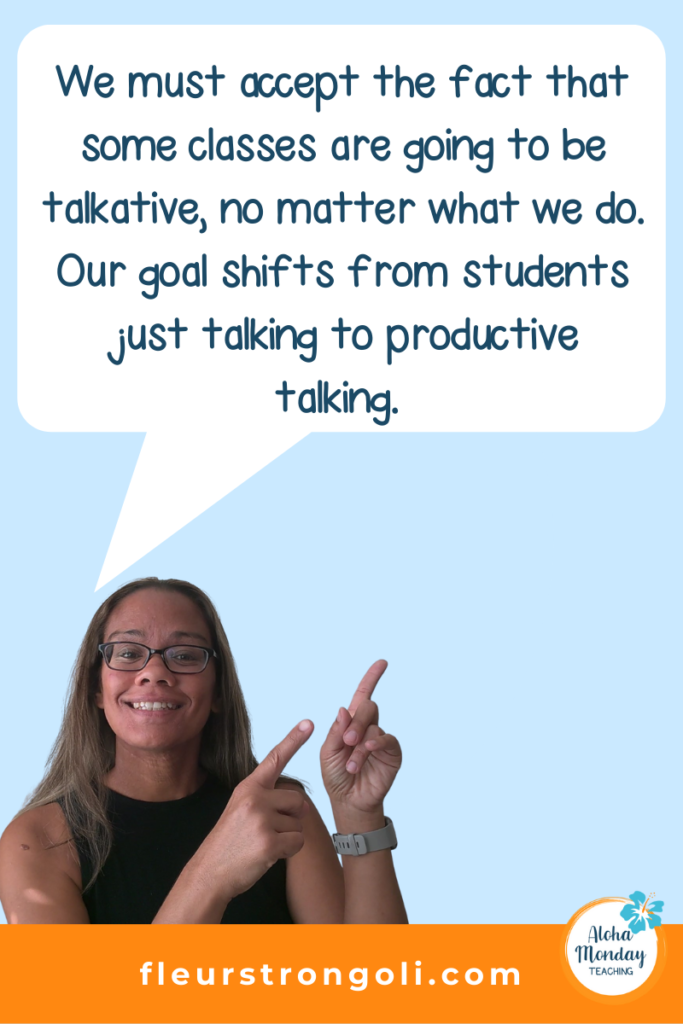
First, we must accept the fact that some classes are going to be talkative, no matter what we do. It’s still important for us to use a variety of tools to manage these classes. Our goal shifts from students just talking to productive talking. Some classroom management ideas for a talkative class include seating arrangements, teaching expectations, and cooperative learning. These can help us daily, and hopefully will make our talkative classes shift from just talking to productive talking.
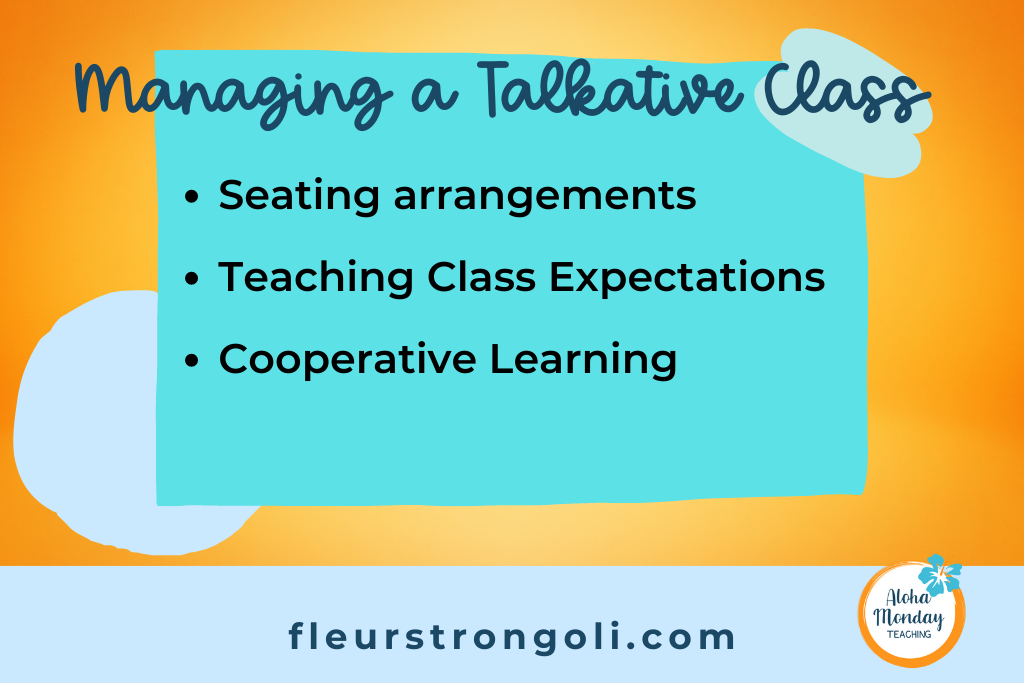
Seating Arrangements
I know this doesn’t always work, because some students will keep talking no matter where you put them. But, seating arrangements are very important. Most students will talk less and focus better when they are seated near the teacher. For some students, you want to make sure they are facing the front of the room, and don’t have many people around them. This will help them by setting them up to look in one direction, rather than turning around in all directions.
A great book to read is Tools For Teaching by Fred Jones. He has a whole chapter about proximity and seating arrangements.
Teaching Expectations
At the beginning of the year, and throughout, you will be teaching and reviewing your expectations. But in our talkative classes, we seem to be constantly repeating our expectations. That’s okay, even though it’s exhausting. It is important to correct behaviors so they know what they are doing wrong. Don’t give up on them. For your sanity, and so kids know they are doing some things right, focus more on what they are doing correctly and reinforce it.
When you are mentioning what they are doing right, use Love and Logic verbiage. “I noticed that most of you were ready for the directions.” The words, “I notice” go a long way! Use that for individual students too.
Read more about expectations here.
Cooperative Learning
Another management strategy is using cooperative learning. If you haven’t read or learned about Kagan’s Cooperative Learning yet, this might be the time to do so. I use this in my classroom, and it ensures that my students are engaged and learning, even though they talk a lot.
This will help you shift the talking into actual discussion and learning. Give students opportunities to talk to each other and to work together toward a common goal.
Managing a Talkative Classroom – Strategies
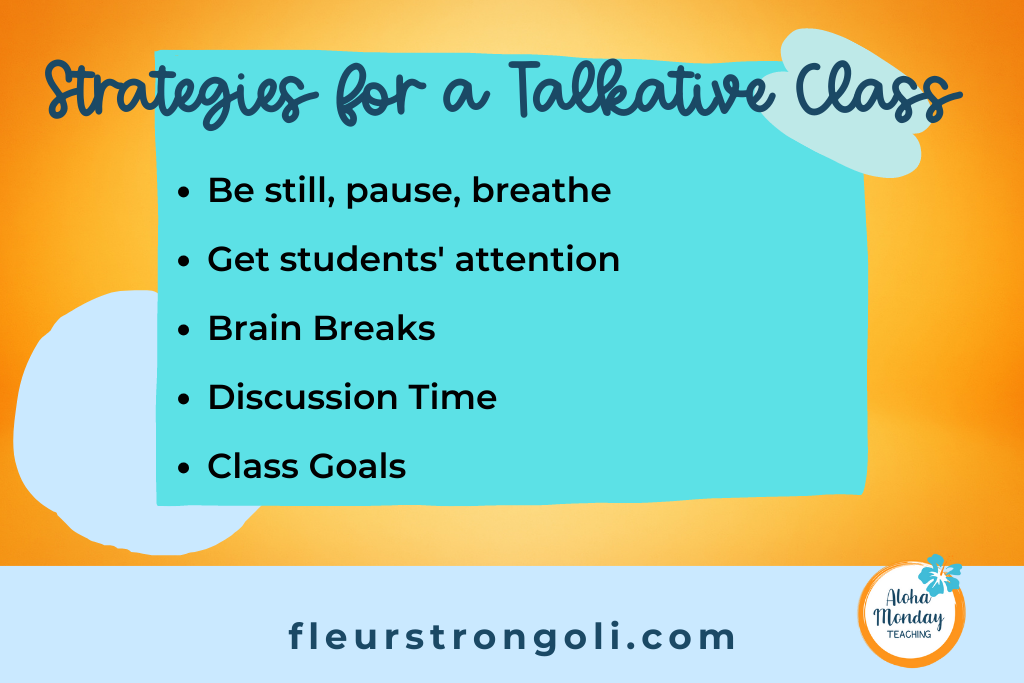
There are some strategies you can do in your talkative classroom to quiet the kids down and keep you calm. They may keep your students quiet long enough during the class period, and eventually on more days throughout the year.
Be still, pause, and breathe
This will help you stay calm, especially when your patience is low at the end of the school day. There are times I stand there, in front of the classroom, and just breathe. The kids quiet down, and wonder if I’m okay. I then tell them that this is how to keep yourself calm when you are feeling frustrated. You can have them practice breathing too.
Getting Students’ Attention
You can use different ways to get your students’ attention. The key is to teach it, practice, reinforce and correct it. When you have students’ attention, then they are quiet and ready.
Here are a few ideas on attention getting strategies:
- Sounds – ding bell, door bell, chimes
- Music
- Call and response
Brain Breaks
Use brain breaks to have students release some energy or calm down. Go Noodle has some brain break videos that will appeal to middle schoolers. I love the brain breaks in the book Refocus and Recharge: 50 Brain Breaks for Middle Schoolers. There are energizing brain breaks and calming brain breaks.
Discussion
Allow your students to participate in discussion within their groups, and then the class. Teach them how to talk to each other and how to listen. If students are talking when someone is sharing, be sure to correct the behavior so students know that they should be listening.
Class Goals
One of my favorite strategies comes from the book Whole Brain Teaching for Challenging Kids. I modified the Super Improvers Team so each class works together towards common goals. The goals are academic and behavior. When they make progress or reach a goal, they earn a star. Earning 10 stars moves them up a level and they get a class reward. The final goal is to reach Living Legend!
Managing a Talkative Classroom – Consequences
What are some positive and negative consequences for a talkative classroom?
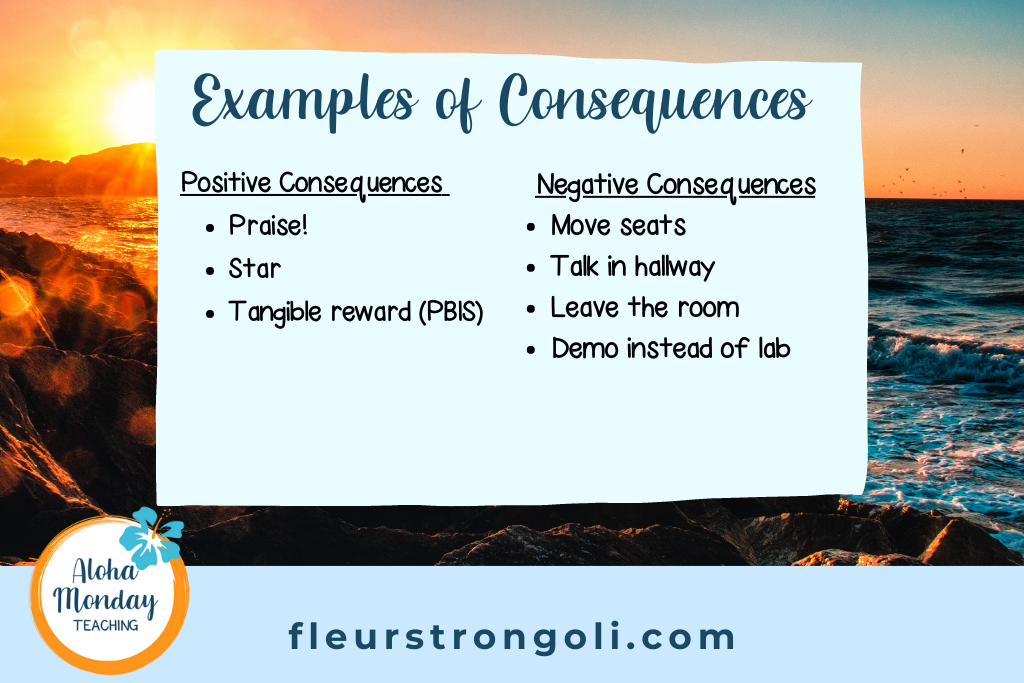
First, when you are addressing the class to correct their behavior, it is extremely important to keep your student’s dignity intact. You want to give them opportunities to correct their behavior on their own.
When students are talking and not following your expectations, they should have some kind of consequence. Using Love and Logic, give them two choices you can live with. For example, “We can complete this in class or you can complete it for homework.” Two choices, but you have to be willing to follow through.
When you correct their behavior, that is a consequence. Other negative consequences include students moving a seat, talking to you in the hall, leaving the room, or not being able to participate in an activity. On a lab day, if students are not following directions, I will do a demo for them. Sometimes I will have the students who are ready and following directions complete the demo with me around the room so everyone else can see.
So what do you do when students are following the expectations? Here are some positive consequences- praise! Let the students know what they did right and encourage them to keep doing that. If you use the Super Improvers Team, give the class a star and tell them why they earned it. Perhaps your school is a PBIS school- give them a positive reward like their ticket.
Wrap Up
Managing a talkative class can be exhausting, but we can make it better in different ways. First, we need to accept it and be real- some classes may always be talkative. The goal then is to shift it from just talking to productive talking. We do this through classroom management like seating arrangements, classroom expectations, and cooperative learning.
Some strategies we can use will keep us calm and quiet our classes down. We need to pause and breathe, get students’ attention, offer brain breaks and discussion times. Finally we need to be sure we are giving consequences- both positive and negative.
Your Turn
Think of your talkative class or classes. What do you do now that works for you? What will you try so your students are more focused and engaged?

Read More
10 Common Classroom Procedures to Teach for a Great School Year or Watch on YouTube
Links to Books
Tools for Teaching by Fred Jones
Refocus and Recharge! 50 Brain Breaks for Middle Schoolers
Whole Brain Teaching for Challenging Kids and the rest of your class too


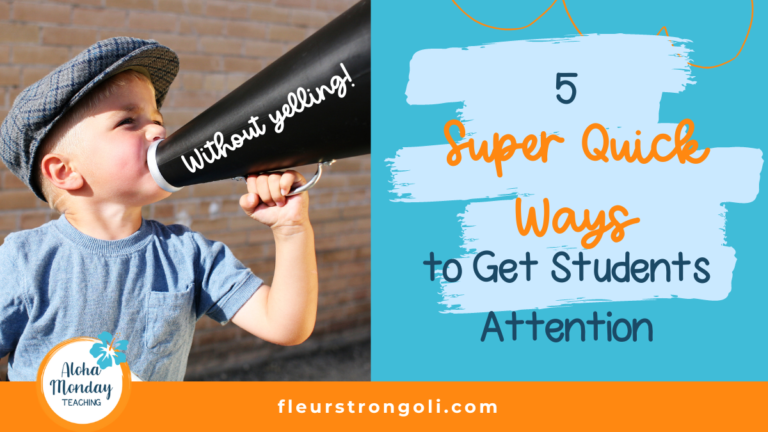



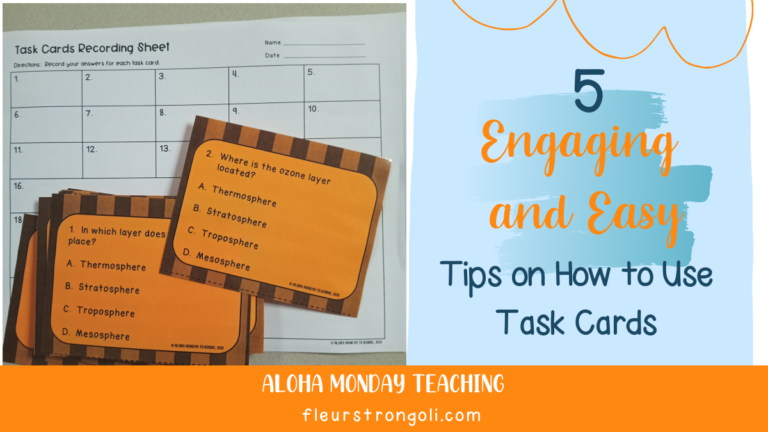

3 Comments